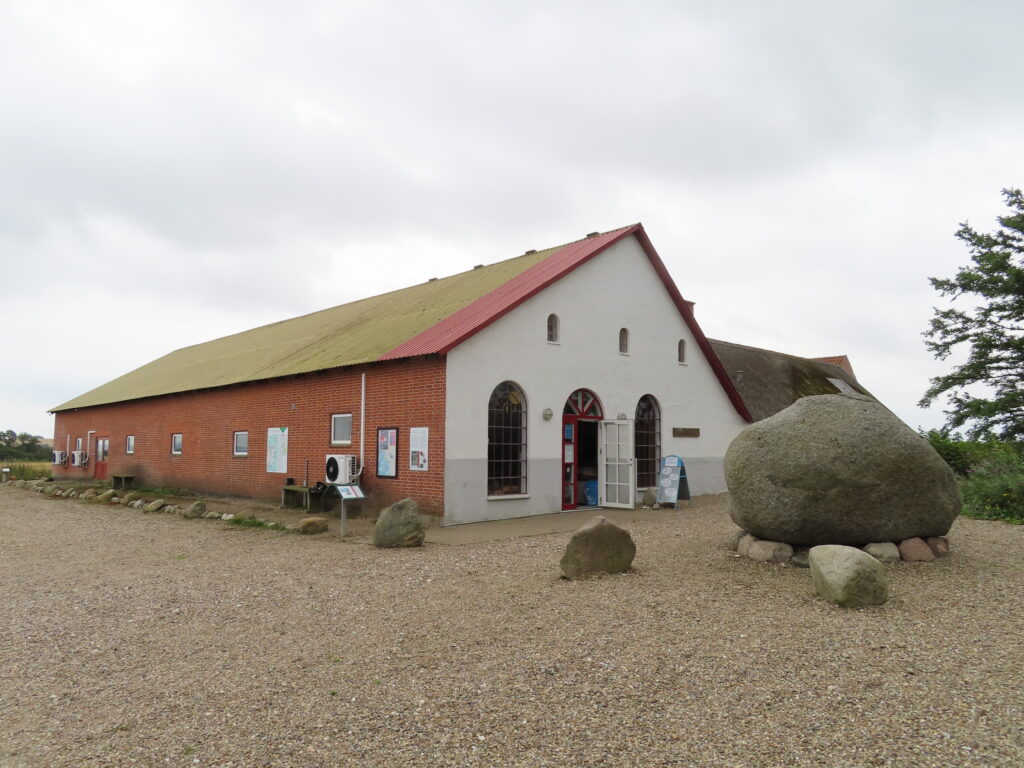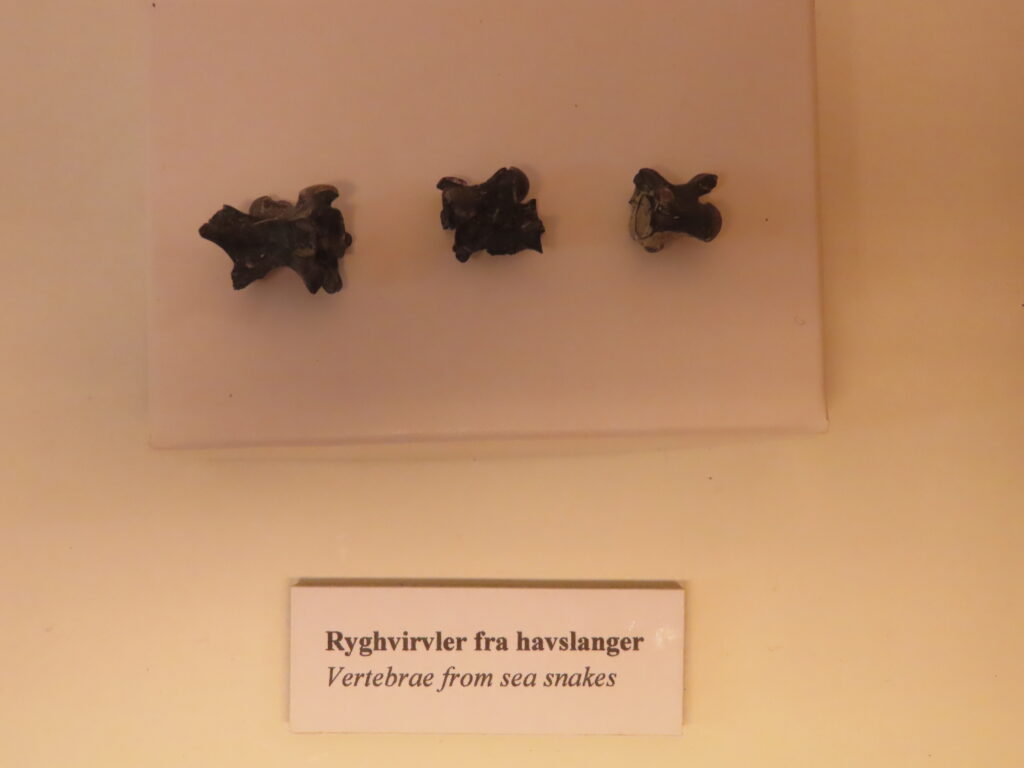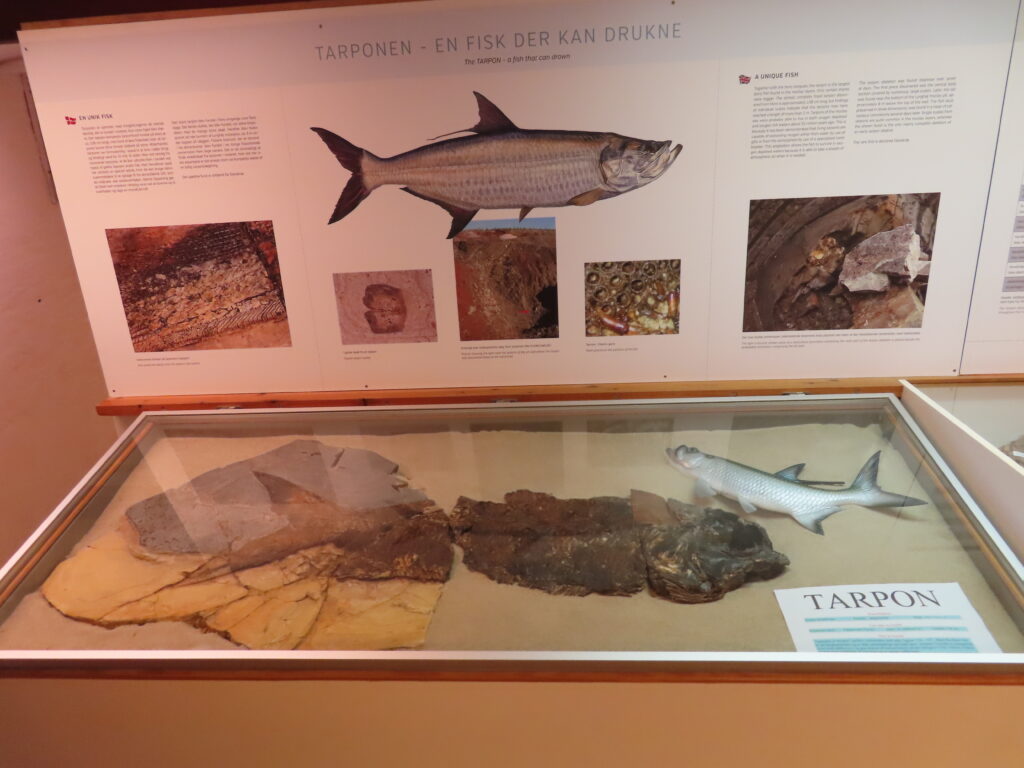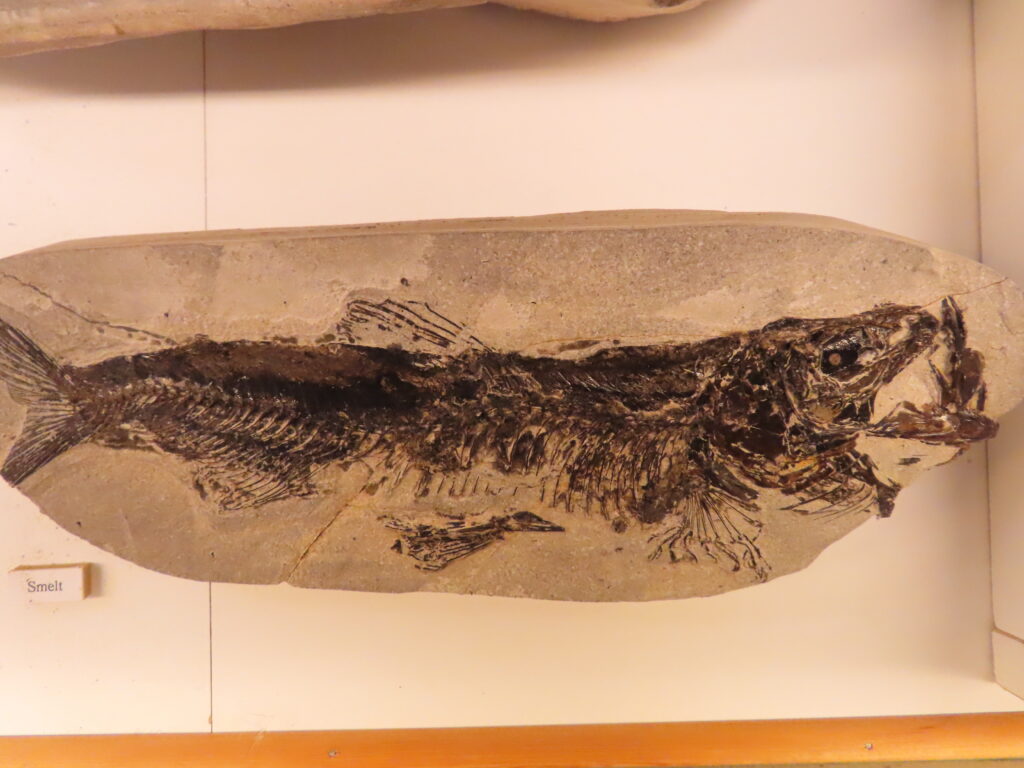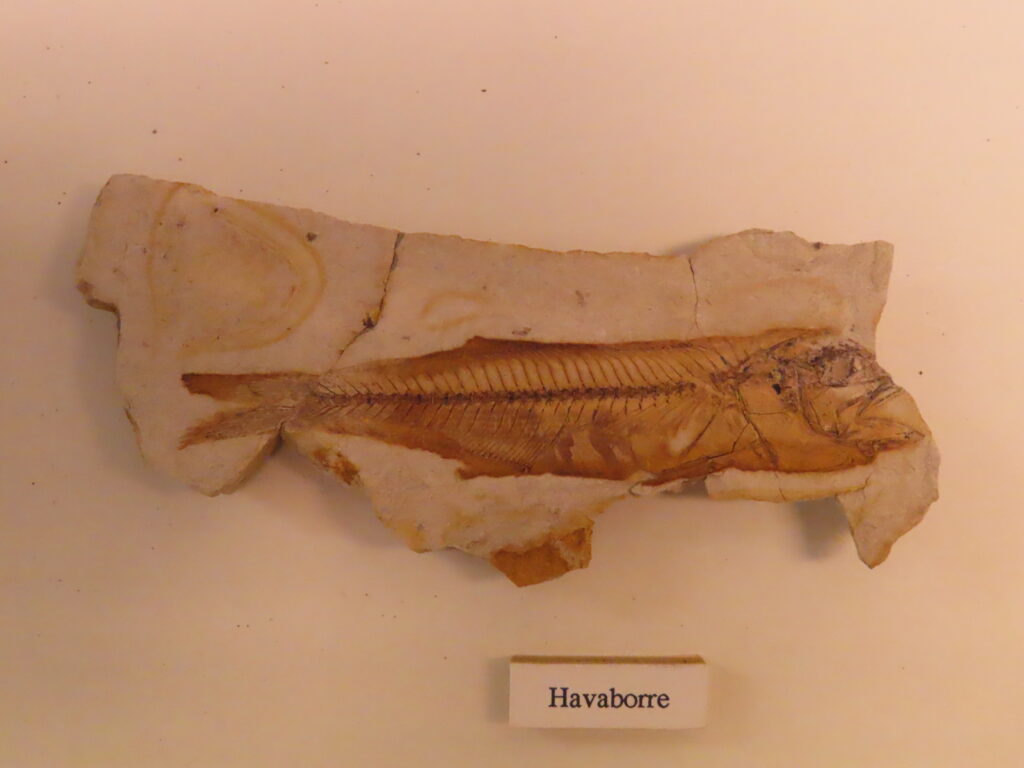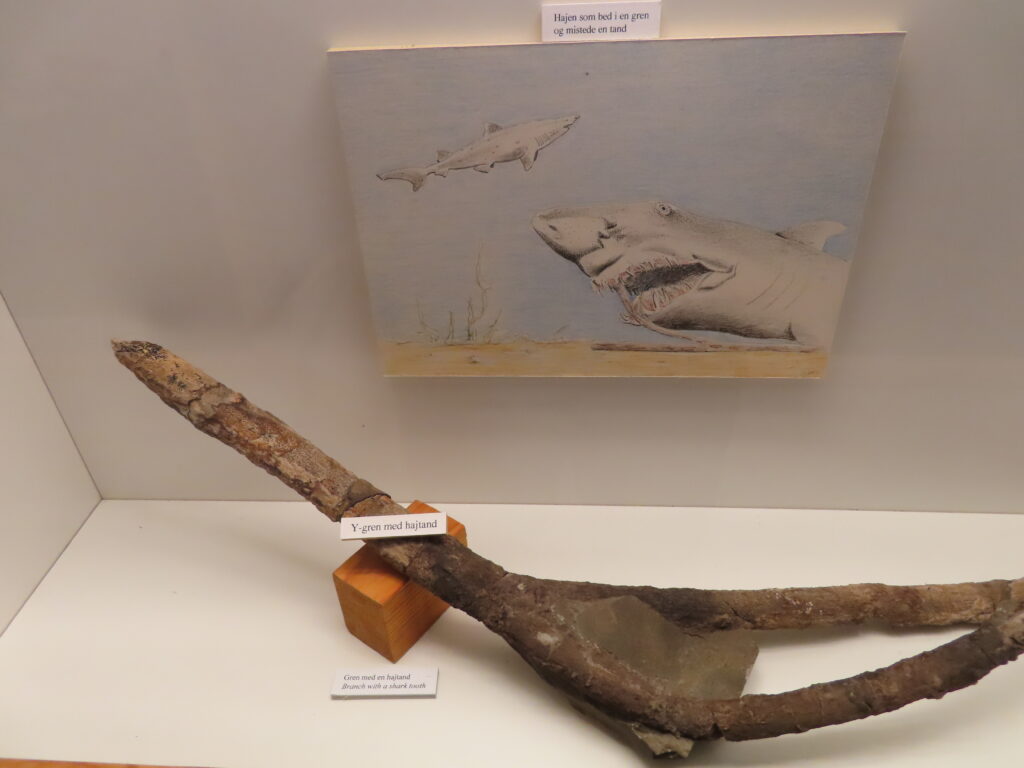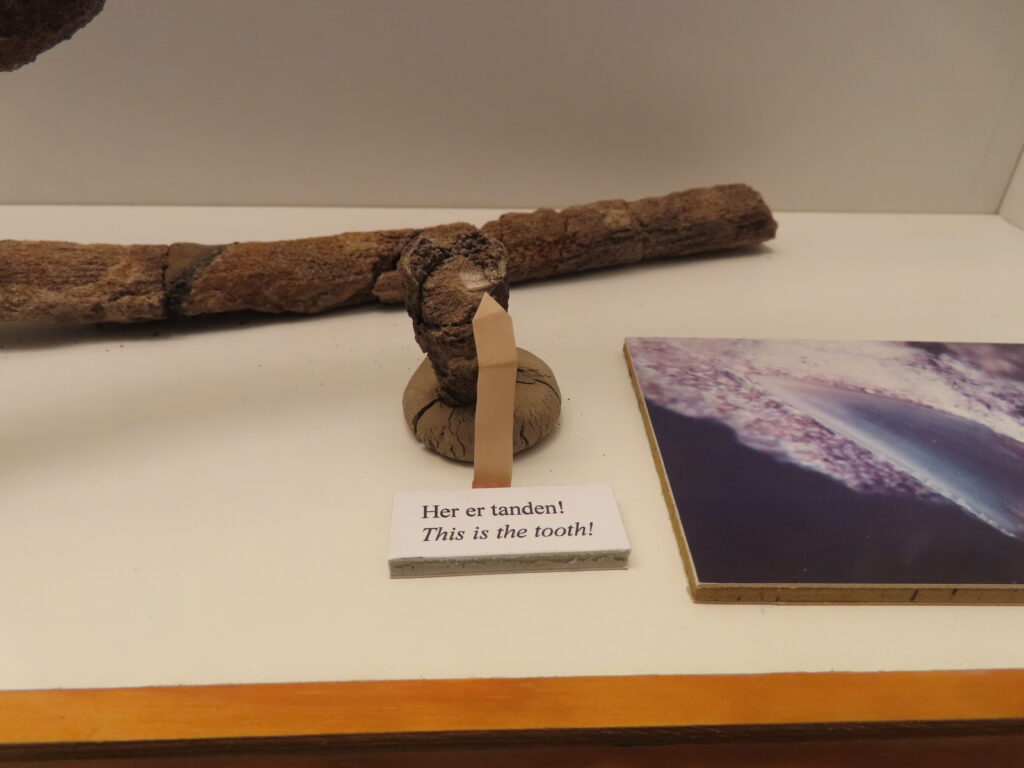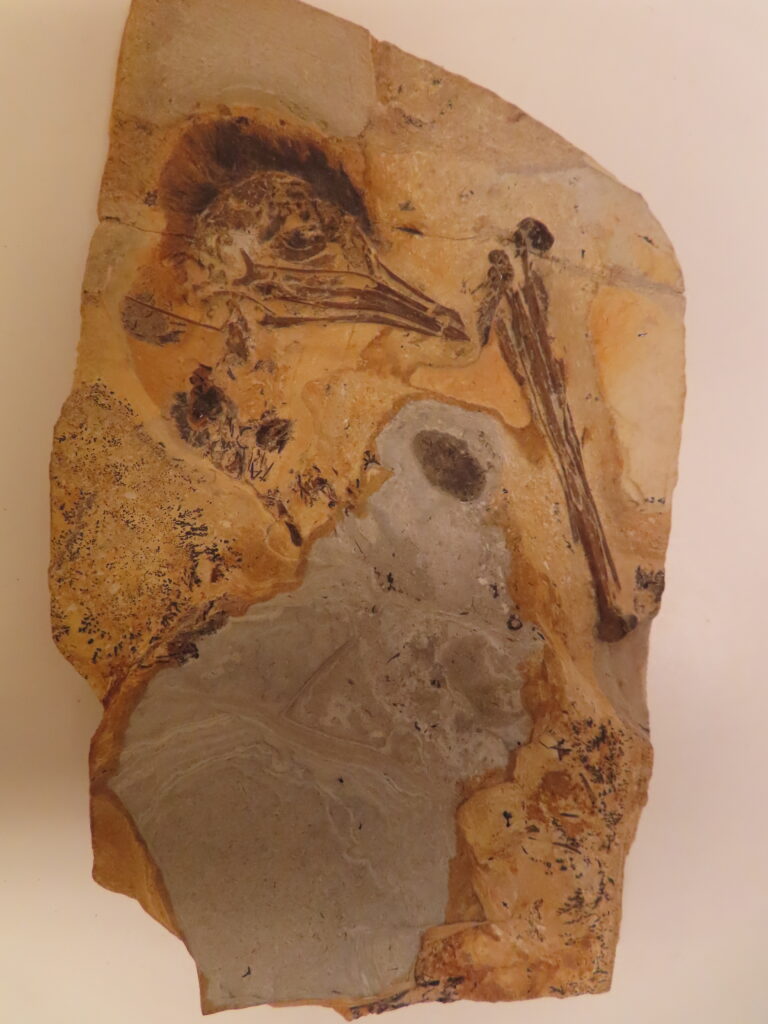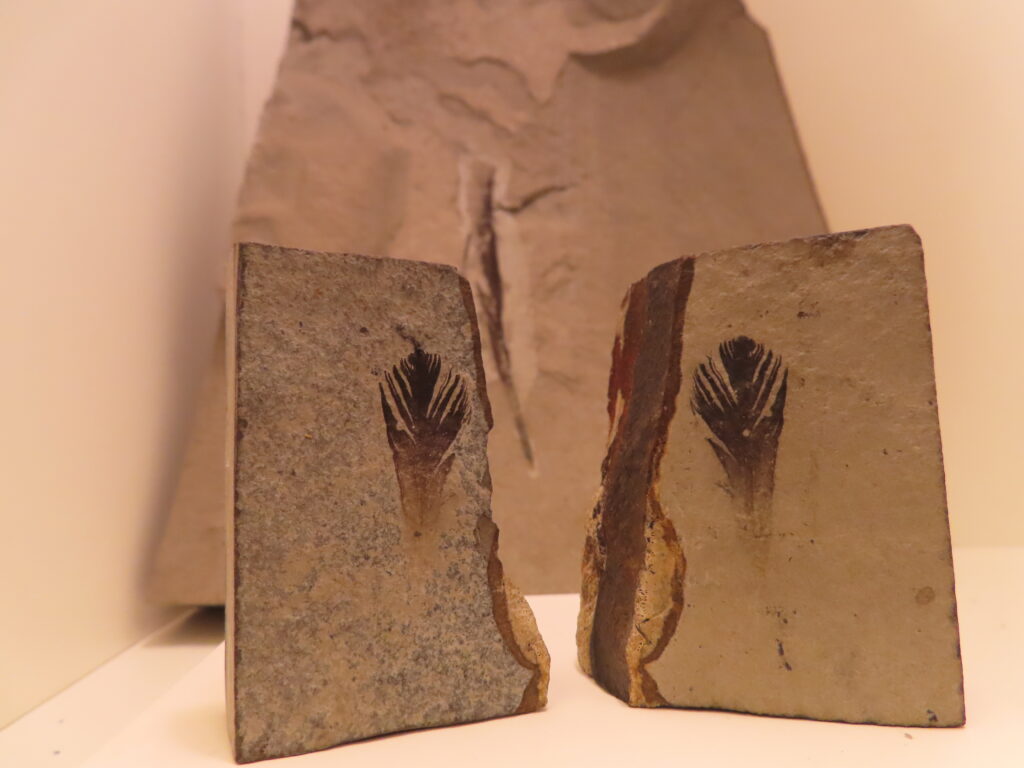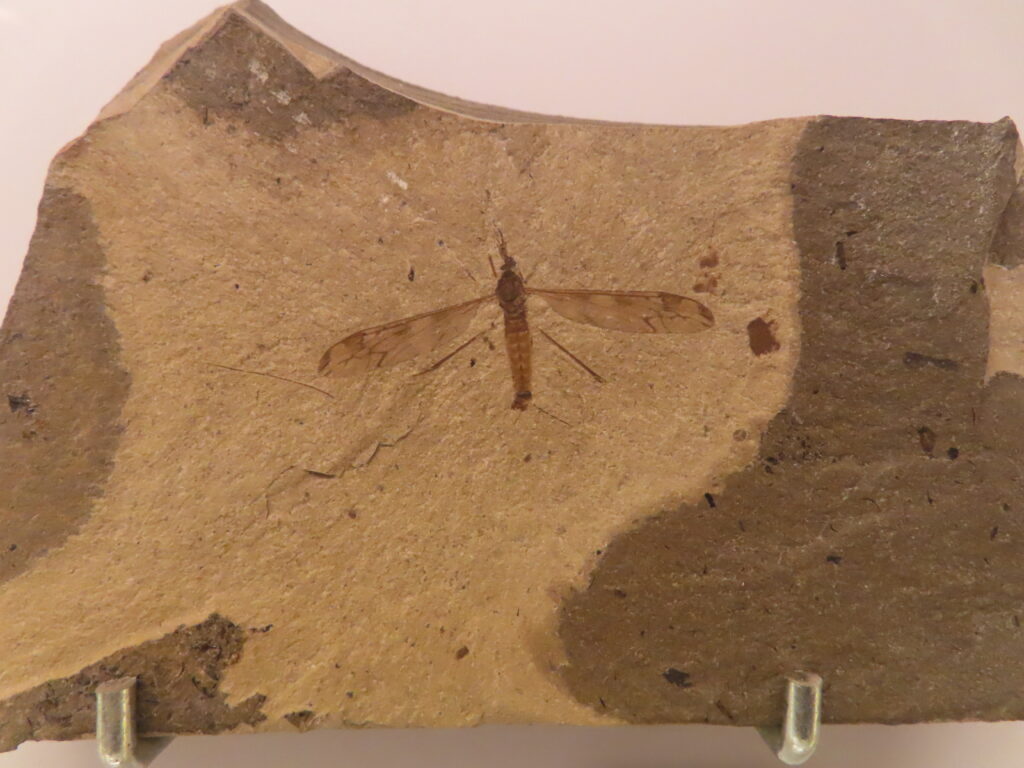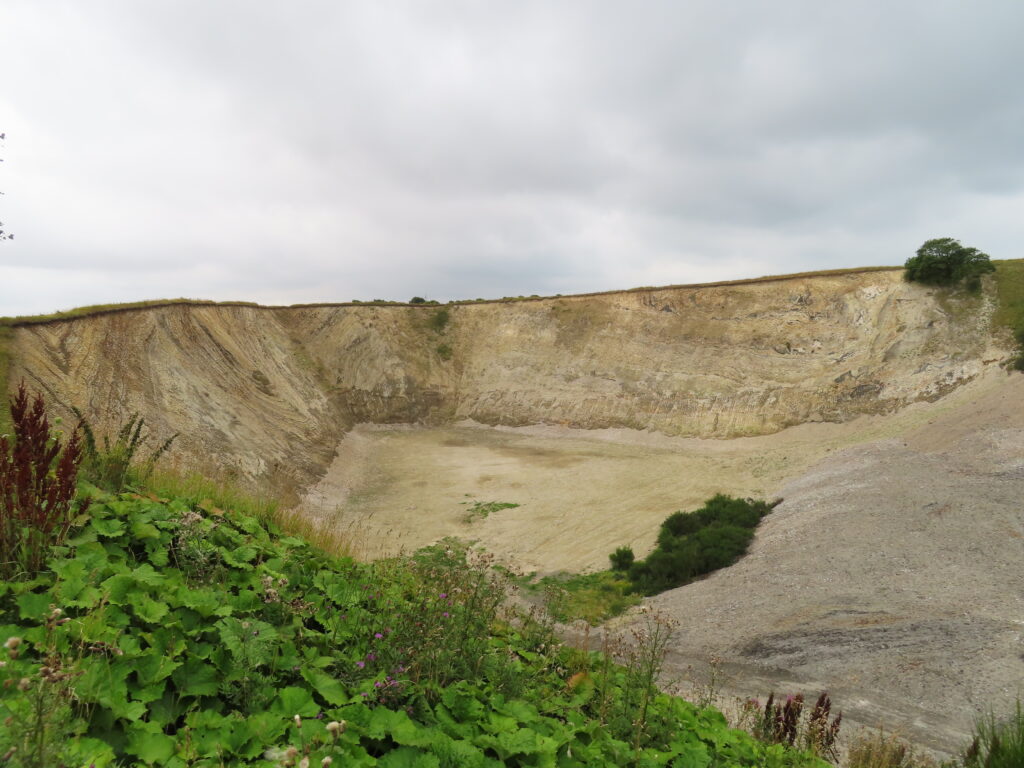During my recent visit of Jutland in the North-West of Denmark, I had the chance to see some amazing Eocene fossils on Mors, a small island located within the Limfjord.
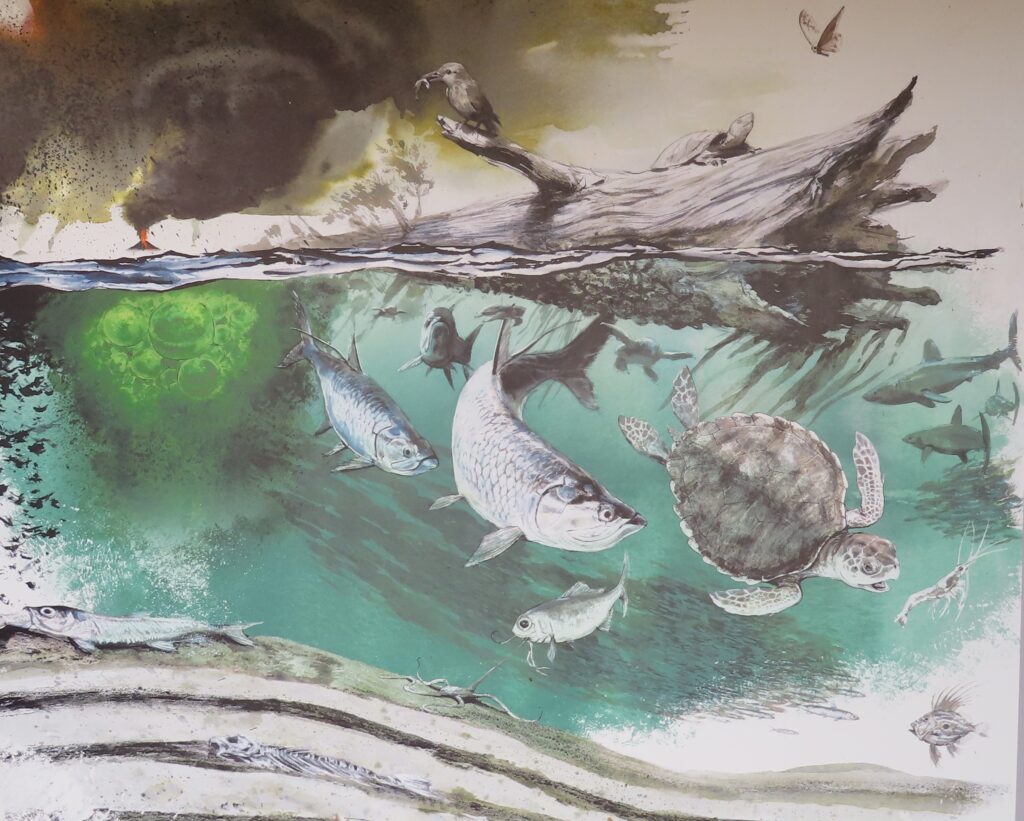
Mors is famous for some exceptionally well preserved fossils from marine diatomea deposits of the Eocene. It includes mainly marine species, but also a surprising number of non-marine animals as well, like various insects and tropical birds. You can see many of those wonderful fossils in the Fossil- og Molermuseet, which is located in an old farmhouse, in the North of Mors.
It is absolutely impossible to show more than just a tiny fraction of the countless fossils in the museum, so I will mainly focus on some highlights. First of all the „star“ of the museum, an exceptionally preserved turtle of the species Tasbacka danica which is called „Luffe“. What is particularly special about this specimen is that even some of the soft tissue was preserved as dark shadows around and above the bones. In fact, Luffe is best preserved fossil of a juvenile turtle of the world.

There are also some other fossils of turtles, but there´s something that I find even much more interesting. This was one of the most amazing fossils in the whole collection for me. Some vertebrae of Palaeophis, a genus of large to giant marine snakes. Admittedly, those vertebrae doesn´t really look particularly impressie, and they did not belong to a giant specimen, but this snake would still have easily dwarfed every extant marine snake.
Another particularly awesome specimen was a nearly complete male tarpoon of about 1,2 m:
Sadly thiss photos doesn´t really show the size of this fossil or the wonderfully preserved details. You can see more photos and read more about this specimen here.
Here you can see one of several exceptionally well preserved mackerels. Again you can see not just the mere bones but shadows of the soft tissue:
Fossils like this one are also a good reminder how little sense the common use of the term „living fossil“ makes. Many modern teleost fishes were already present in the Eocene and have hardly changed over time. This mackerel is already completely anatomically modern and hardly distinguishable from its modern relatives. After all, it differs lesser from its modern relatives than Allonautilus from its ancestral forms of that time. But yet we would hardly consider a mackerel as a living fossil, nor one of the many other modern teleost fish species which hardly differ from their Eocene ancestors.
A fossil sea bass, again with soft tissue shadow:
Here is also another quite unusual specimen, a fossilized branch with a shark tooth embedded:
Detail of the tooth:
There are also a lot of birds from Mors, including some with preserved plumage, like this Pellornis mickelseni, a relative of modern trogos:
What is especially amazing is how some of the fossilized feathers have even preserved their patterns:
We can see similarly amazing details in some of the arthropods, like this gnat:
Fossils of such an extraordinairy quality are extremely rare. Here is another wonderful specimen, a large locust with patterned wings:
I also visited the are where many of the fossils were found, a stone pit which is just next to the museum:
I had sadly not much time to search for fossils, because there was strong pelting rain just about 15-20 minutes after my arrival. But it was yet a quite successful fossil hunt. I found the remains of a small fish, a brittle star (which is quite rare) and something that appears to be an insect.
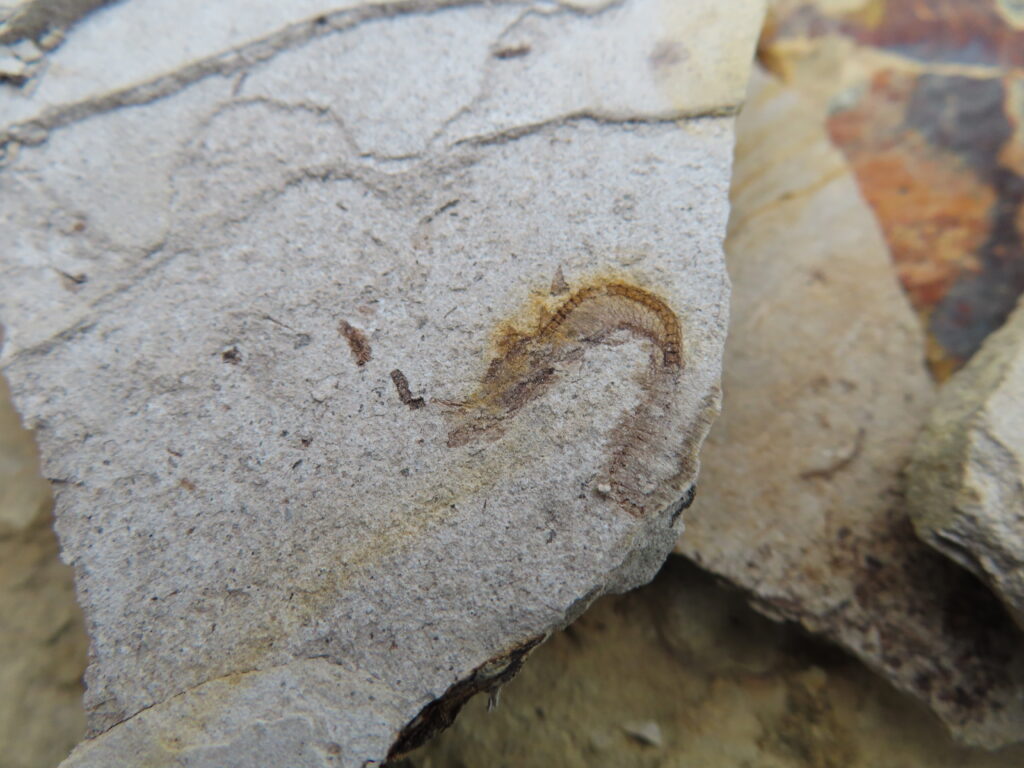
If you should ever visit Norther Jutland, I can only highly recommend you to visit the fossil museum of Mors. With the ticket you can also visit some other museums nearby, from which the historical museum in the old monastery of Nykøbing Mors is especially interesting.

